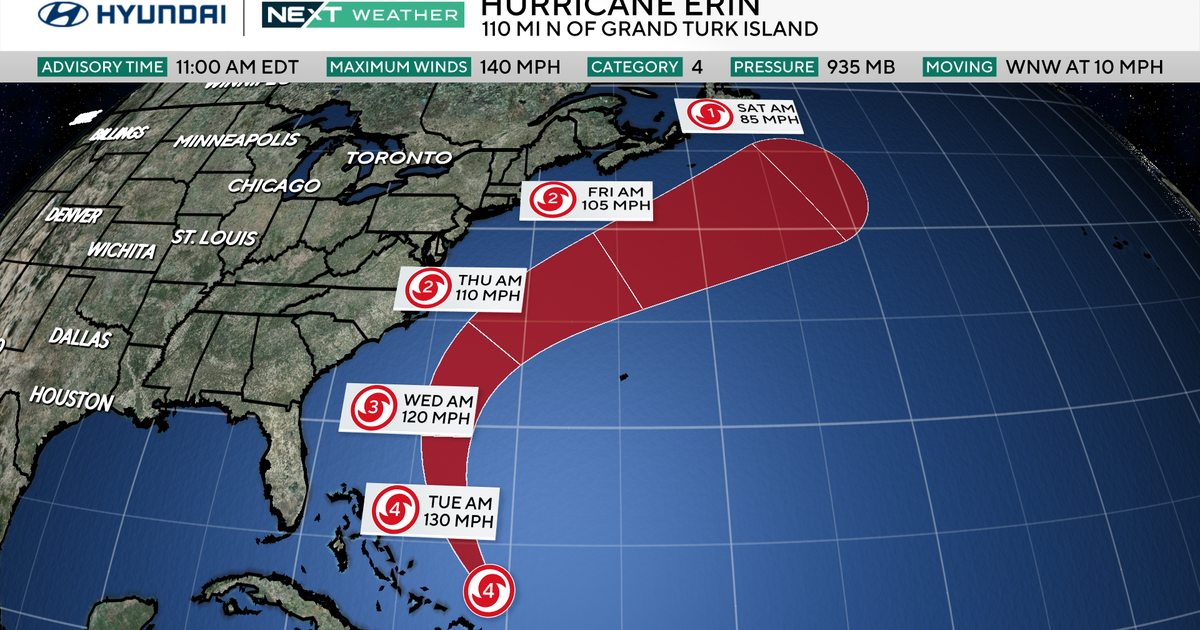As Hurricane Erin moves closer to the East Coast, it’s stirring up powerful and dangerous rip currents that will affect our beaches and shore points.
While the storm isn’t making landfall, it’s generating strong swells that are forecasted to build waves between 8 and 12 feet. Officials in Wildwood, Margate, and Brigantine, New Jersey, and Rehoboth Beach, Delaware, among other shore towns, have already prohibited swimming as a precaution. More closures may follow as these forceful “rivers of the sea” surge toward the coast.
“You’re allowed on the beach, but you will not be allowed in the water because we have treacherous conditions going on right now,” said Ed Schneider, Wildwood Beach Patrol captain. “We have a rip current warning, we have [a] rough surf warning, we have [a] storm warning, and conditions are bad.”
In a post on Instagram, Margate Beach Patrol said it was prohibiting swimming and bathing until further notice because of the storm. Lifeguards will be on duty but will be telling people to stay out of the water, the post says. “We do not recommend surfing and kayaking,” it says, adding that anyone who goes into the water does so at their own risk.
Strong northeasterly winds in Avalon, New Jersey, led police to close the road leading to the Townsends Inlet Bridge on Monday. Officials said the winds and waves created unsafe conditions for the road leading to the bridge in Avalon. Drivers were advised to use alternate routes, including Avalon Boulevard.
The coastal concern also hit close to home in Atlantic City. The city’s Office of Emergency Management and beach patrol agree that the big concerns include beach erosion and minor flooding.
“We just had a beach replenishment last year,” said Scott Evans, Atlantic City’s fire chief and emergency management coordinator. “Unfortunately, we’re going to see — probably lose some of that to this storm.”
Keep reading to see a full list of shore points where swimming is temporarily prohibited due to Erin’s effects.
Beaches are open in Brigantine, New Jersey, but no swimming is allowed due to Hurricane Erin
02:00
Hurricane Erin stirs up dangerous rip currents
Rip currents are narrow, fast-moving channels of water that race away from shore through the surf zone. They form when wave energy pushes water toward the beach, creating elevated water levels that drain seaward through gaps in sandbars or around structures like jetties and piers.
Though they may look calm or deceptively safe, rip currents can move exceedingly fast and are the leading cause of beach rescues.

CBS News Philadelphia
Staying safe in these conditions means taking smart precautions.
Swim only at beaches where lifeguards are on duty, heed all posted warnings and stay clear of piers or jetties where rip currents tend to be strongest — at least 100 feet away is best.
If you find yourself caught in a rip, don’t panic or try to swim directly back to shore. Instead, float calmly or tread water, then swim parallel to the beach to escape the flow. If that fails, float until the current dissipates and call for help.

CBS News Philadelphia
With Hurricane Erin expected to keep brewing dangerous surf, it’s vital for beachgoers to stay informed and cautious in the coming days. Stay with the CBS News Philadelphia NEXT Weather team for more as we track the storm.
List of beaches with no swimming advisories due to ErinJersey ShoreDelaware beaches
More from CBS News
